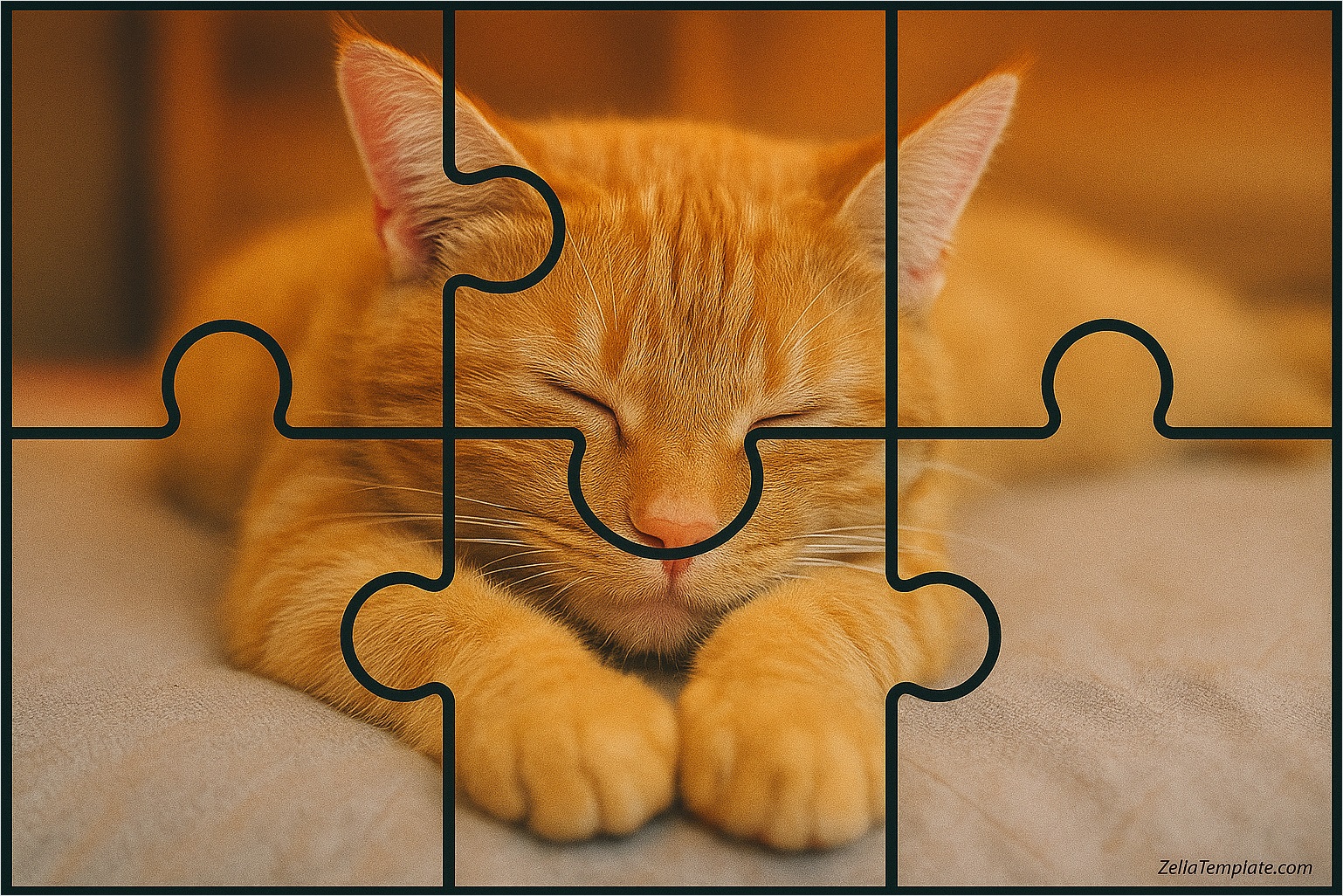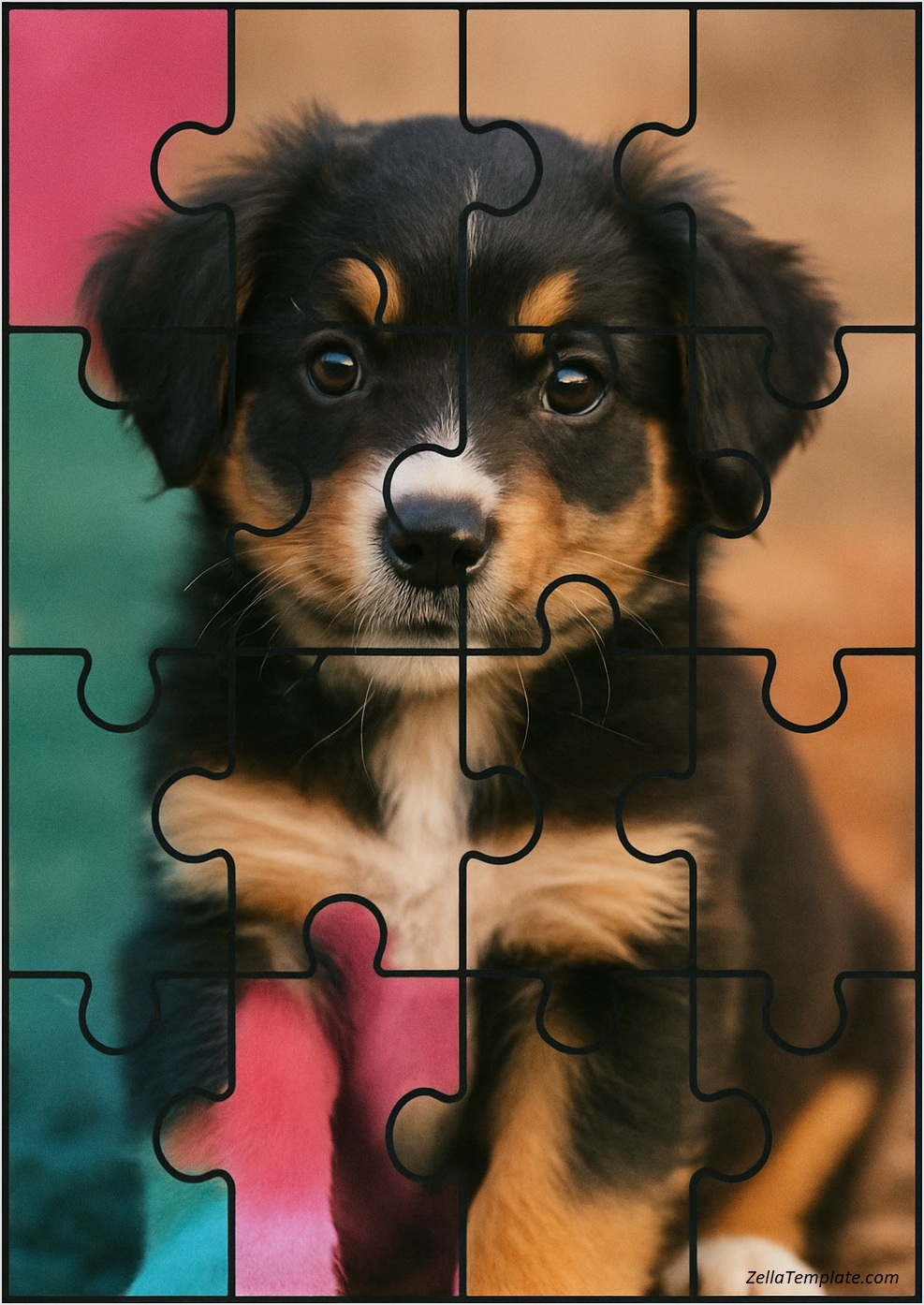A puzzle piece offers a unique and engaging way to form images that challenge both the mind and the eye. Breaking an image into pieces creates an interactive experience, where the irregular shapes add complexity and make solving the puzzle both difficult and satisfying.
Table of Contents
Revealing the full image requires patience, keen attention to detail, and strong pattern recognition, turning the process into a rewarding mental exercise.

Benefits of Working with Puzzles
- Improves Cognitive Skills. Puzzles challenge the brain to solve problems, recognize patterns, and enhance spatial awareness. Assembling pieces exercises critical thinking and strengthens overall cognitive function.
- Enhances Concentration. Solving puzzles demands focus and attention to detail. Observing shapes, colors, and placement sharpens concentration and helps improve sustained attention over time.
- Boosts Creativity. Working with puzzles encourages creative thinking. Exploring different ways to fit pieces together promotes experimentation and imaginative problem-solving.
- Relieves Stress. Puzzling can be a calming, meditative activity. It helps lower stress, promotes relaxation, and provides a sense of satisfaction as progress is made.
- Builds Patience. Puzzles teach patience and perseverance. Overcoming challenges and sticking with the task fosters resilience, an important life skill.
How a Puzzle Piece Template Can Enhance Your Teaching
1. Engages Students
Integrating puzzles into teaching materials can capture students’ attention and boost their interest in the subject. The interactive, hands-on nature of puzzles promotes active participation, making learning more engaging, enjoyable, and easier to remember.
2. Encourages Critical Thinking
Using puzzle piece templates in education fosters critical thinking by encouraging students to analyze, evaluate, and solve problems creatively. To complete the puzzle accurately, they must apply logical reasoning and deductive thinking skills essential for deeper learning and problem-solving.
3. Reinforces Concepts
Puzzle piece templates help reinforce key concepts taught in the classroom by offering a hands-on learning experience. When incorporated into lesson plans, they enhance knowledge retention and deepen students’ understanding through active engagement.
4. Promotes Teamwork
Collaborative puzzle-solving activities promote teamwork and communication skills among students. As they work together to complete a puzzle, they learn to share ideas, listen actively, and cooperate to reach a shared goal.
5. Provides a Hands-On Learning Experience
Manipulating puzzle pieces provides a tactile learning experience ideal for kinesthetic learners. Physically handling the pieces helps students strengthen their understanding of spatial relationships, recognize patterns, and improve visual perception through hands-on engagement.
Materials You Need to Make Puzzle Pieces
- Cardboard or Heavy Paper. Use sturdy materials like cardboard or thick paper to ensure the puzzle is durable and can handle repeated use. The base’s strength directly affects the puzzle’s longevity and quality.
- Scissors or Craft Knife. Sharp scissors or a craft knife allow for clean, precise cuts. Smooth edges help pieces fit together seamlessly and improve the overall puzzle experience.
- Printed Image or Design. Choose a high-resolution image or design with vibrant colors and clear details. A well-chosen visual adds appeal and keeps users engaged.
- Glue or Adhesive. Secure the image to the base material with a strong, even adhesive. Make sure it’s not too thick to avoid affecting the puzzle’s fit and finish.
- Ruler or Straight Edge. Use a ruler or straight edge to guide straight, accurate cuts. This ensures consistency in the shape and size of the puzzle pieces for a clean, cohesive result.
Create Your Puzzle for Kids
- Choose a Kid-Friendly Image. Select a colorful, engaging image that matches children’s interests—like animals, cartoons, or favorite characters—to capture their imagination and attention.
- Print the Image on Cardboard. Print the image on sturdy cardboard or heavy paper for a durable puzzle that can withstand repeated use. A vibrant, high-quality print enhances the visual appeal.
- Cut Out the Puzzle Pieces. Cut the image into a variety of shapes and sizes to make the puzzle fun and challenging. Use creative cutting patterns to encourage problem-solving and critical thinking.
- Mix Up the Pieces. Shuffle the pieces to create an exciting challenge. This step helps children build strategy, persistence, and logical thinking as they work to complete the puzzle.
- Enjoy the Puzzle Fun. Let kids dive into the puzzle-solving experience! Celebrate their progress, encourage creativity, and make it a fun learning activity they’ll want to repeat.

Free Cut-Out Puzzle Piece Template
A puzzle piece is a fun and versatile tool for creative projects, educational activities, and personalized gifts. Whether you’re planning a classroom lesson, making a DIY craft, or designing a unique game, using a printable template can save time and ensure clean, consistent results.
Get our free printable cut-out puzzle piece template today and start creating your custom puzzles in minutes. Perfect for teachers, parents, crafters, and designers—just print, cut, and get inspired!
Six Piece Puzzle Template – Word
12-piece Puzzle Template – Word